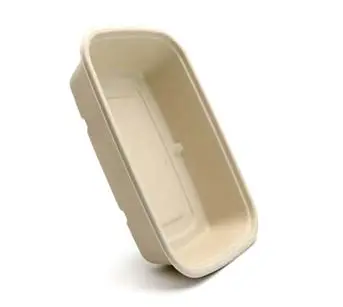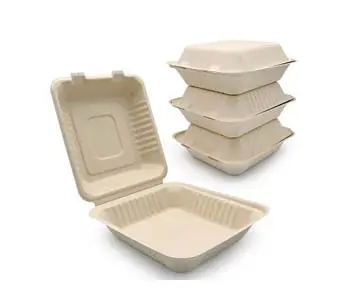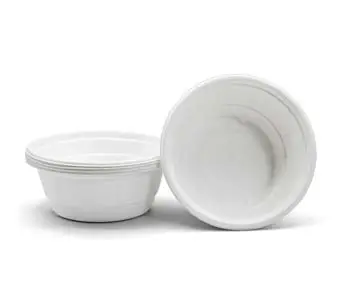A sugarcane plate, also known as a bagasse plate, is a type of disposable Biodegradable plate made from sugarcane fibers. Bagasse is the fibrous residue left behind after extracting juice from sugarcane stalks. Instead of discarding this byproduct, it is used as a raw material for making various products, including plates.
Process of Making Sugarcane Plates
1. Collection and cleaning: The sugarcane fibers, or bagasse, are collected from sugar mills or sugarcane processing facilities. The collected bagasse is thoroughly cleaned and separated from other impurities.
2. Pulping: The cleaned bagasse fibers are then pulped in a process that involves breaking them down into a fine pulp. This pulp is often bleached to remove any residual impurities and achieve a lighter color.
3. Molding: The bagasse pulp is then poured into molds corresponding to the desired plate shape and size. The molds are typically heated and pressed to shape the pulp into plates while removing excess moisture.
4. Drying and finishing: The molded plates are carefully dried using methods such as air drying or heat drying. This removes any remaining moisture from the plates and helps them retain their desired shape. After drying, the plates may undergo additional finishing processes, such as trimming rough edges or coating them with a food-grade waterproof layer.
Advantages of Using Sugarcane Plates
Using biodegradable sugarcane bagasse plates, also known as bagasse plates, offers several advantages compared to traditional disposable plates made from materials like plastic or foam. Here are some key advantages of using sugarcane plates:
Sustainability
Sugarcane plates are made from bagasse, which is a byproduct of the sugarcane industry. By utilizing bagasse, these plates help reduce waste and make use of a resource that would otherwise be discarded, contributing to a more sustainable and circular economy.
Renewable Resource
Sugarcane is a fast-growing plant that can be replenished relatively quickly. Using bagasse for plate production reduces the reliance on non-renewable resources such as petroleum or fossil fuels.
Biodegradability
Sugarcane plates are biodegradable, meaning they can naturally break down and decompose over time without leaving harmful residues.
How long do sugarcane plates take to decompose
Sugarcane plates typically take about 3 to 6 months to decompose under ideal conditions. The decomposition time can vary depending on factors such as temperature, moisture levels, and microbial activity. In comparison to traditional plastic or styrofoam plates, sugarcane plates are considered more environmentally friendly as they are made from a renewable resource and decompose relatively quickly.
The finished sugarcane boards are then packaged and ready for distribution and use. With their eco-friendly properties and durability as well as being microwaveable, sugarcane plates are gaining popularity as a sustainable alternative to traditional single-use plates made from non-renewable resources.




